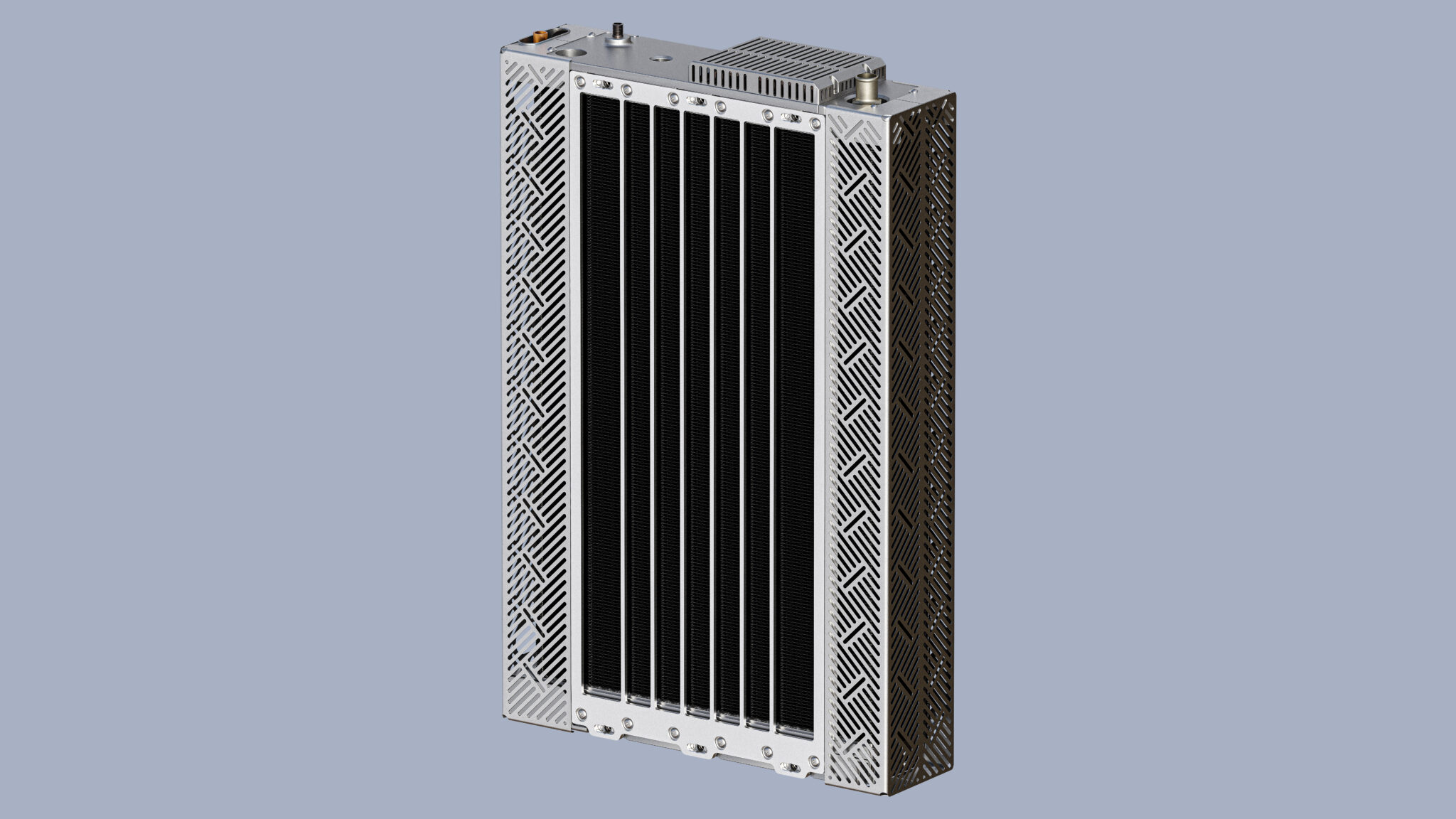ZeroAvia and PowerCell partner on fuel cell development

Image courtesy ZeroAvia
Their joint R&D initiative will focus on intermediate and high temperature fuel cells which will open up more energy intensive applications such as large fixed-wing aircraft and rotorcraft.
The two companies have been working together for the last few years, with PowerCell fuel cell stacks forming part of the prototype ZeroAvia powertrains that have powered both of the breakthrough fuel cell flight demonstrators flown by ZeroAvia.
ZeroAvia is designing a bespoke multistack balance-of-plant architecture using PowerCell’s low temperature proton exchange membrane (LT-PEM) stacks applicable to aviation applications. As such, the Swedish fuel cell manufacturer is a key supplier for ZeroAvia’s first 600kW powertrain (ZA600) designed for up to 20 seat aircraft.
ZeroAvia’s high temperature PEM fuel cell (HT-PEM) stacks - part of the roadmap to delivery of ZA2000 powertrain for 40-80 seat aircraft and a key part of the company’s component offering to other clean flight innovators – are already demonstrating industry record power density in excess of 2.5 kW/kg at the cell level, with a clear pathway to reaching 3+ kW/kg at the system level in the coming months.
Increasing the operating temperature of fuel cell systems can allow for a reduction in cooling and humidification required, simplifying the architecture and improving the amount of power for a given unit of weight.
The collaboration will leverage PowerCell’s long experience industrializing hydrogen-electric technologies to push advanced fuel cells solutions to high TRL levels. For ZeroAvia, it will provide the opportunity to exploit its technology in different sectors, while retaining its core focus on aerospace.
Val Miftakhov, Founder and CEO, ZeroAvia, said: “In PowerCell, we have found a likeminded and collaborative partner over the last few years, with a shared passion for advancing hydrogen fuel cell technologies for more power-hungry aircraft. Working together we can deliver change in this industry faster, as well as using these extreme use cases to advance the capabilities of solutions for myriad other transport and non-transport sectors.”
Richard Berkling, CEO PowerCell Group, said: “We’re confident that the first hydrogen-electric aircraft will be flying commercially in the upcoming years. When that happens, it will have a snowball effect as the environmental and operating cost benefits become clear to airlines and their passengers. For PowerCell, this is a key future market, and we are delighted to be deepening our partnership with the leader in this space to develop solutions to enable more clean flights, removing more emissions.”
ZeroAvia has already extensively tested a prototype of its first engine (ZA600) aboard a Dornier 228 aircraft at its UK base and submitted its certification application for the ZA600 at the end of last year. The company has also performed advanced ground tests in the US and UK for the key building block technologies for the ZA2000 system, including cryogenic tanks or LH2 and proprietary high-temperature PEM fuel cell and electric propulsion systems. ZA2000 will support up to 80 seat regional turboprop aircraft such as the ATR72 or the Dash 8 400.
With a primary focus on developing hydrogen-electric (fuel cell-powered) engines, ZeroAvia has submitted its first powertrain for up to 20 seat planes for certification and is working on a larger powertrain for 40–80 seat aircraft.
Founded in California with teams in Everett, WA and the United Kingdom, ZeroAvia has secured experimental certificates to test its engines in three separate testbed aircraft with the FAA and CAA and passed significant flight test milestones.
The company has signed a number of key engineering partnerships with major aircraft OEMs and has nearly 2,000 pre-orders for engines and its component systems from a number of the major global airlines, operators and OEMs.
PowerCell - headquartered in Gothenburg, Sweden - provides hydrogen electric solutions with unique fuel cell stacks and systems.









